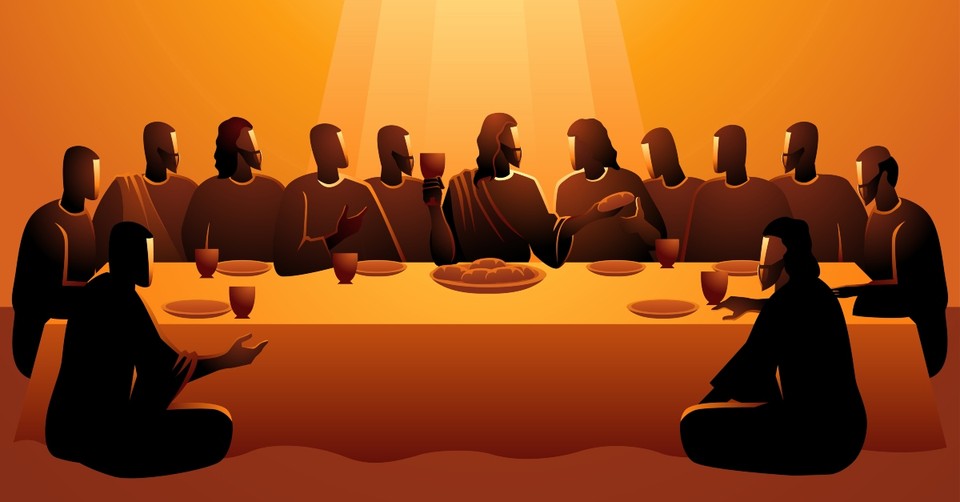12 Important Takeaways from Each of the Disciples

The Twelve Disciples were the twelve men who Jesus chose to follow Him. These men left everything and followed the Lord (Luke 18:24-34). Each of the Twelve was present with the Lord throughout His ministry and served alongside Him. Jesus taught and instructed them in who He was–God in the flesh, as well as how He was going to die for the sins of the world and be raised three days later.
Even though many deep truths were lost on the Twelve, we can reflect on them today. The Twelve were not the prized men of society but rather everyday individuals. Jesus chose them for a reason, and it is good to understand why. The Lord is known for choosing the weak things of the world to shame the strong (1 Corinthians 1:27).
Just as the Lord used His Twelve Disciples to carry on His Name, He can use us, too. After the Lord returned to Heaven, the Twelve were gifted with abilities through the Holy Spirit, such as performing signs, wonders, and healings. Although we don't have these types of gifts from the Holy Spirit anymore, we can still do great things for Him.
This includes taking the Gospel to all nations (Matthew 28:18-20). Just as the Lord directed the Twelve to teach others about Him and baptize them in the Name of the Father, the Son, and the Holy Spirit, we should do the same. Notice in Matthew 28:18-20 that the Lord does not say this command is only for the Twelve. Instead, this command is for all of us since we are His followers.
Peter
Peter is the most well-known disciple of the Lord and was part of the inner three. John and James were also part of the inner three. In the Bible, Peter is also referred to as Cephas. This is because Cephas is Aramaic for Peter. Peter’s original name was Simeon; however, Jesus gave Peter his new name. We are told this in the Gospel of John, “And he brought him to Jesus. Jesus looked at him and said, ‘You are Simon son of John. You will be called Cephas’ (which, when translated, is Peter)” (John 1:42).
As we can see, his original name was Simon, yet Jesus gave him the name Cephas. When translated, Cephas is Peter. Therefore, Peter had many names, yet the name the Lord gave him is Cephas, and it is translated as Peter, meaning “rock.”
In 1 Corinthians 15:3-8, Paul refers to Peter by using the name Cephas. The Apostles sometimes refer to him as Peter and other times as Cephas. This could be the translators, or this is simply what the Apostles were calling him. Nonetheless, Cephas and Peter are the same name and refer to the same person.
Peter is the disciple who claimed he would do anything for Jesus, yet Peter disowned Him three times (Matthew 26:69-74). Despite Peter’s mistake, the Lord reinstates Him after His resurrection. Through a series of “Peter, do you love me?” questions, the Lord reinstates Peter as one of His Apostles (John 21:15-25). Through Peter, we can learn that the Lord will forgive us. All we need to do is turn back to Him.
Andrew
Andrew is Peter's brother and was the first to find Jesus. The Bible tells us, “Andrew, Simon Peter’s brother, was one of the two who heard what John had said and followed Jesus. The first thing Andrew did was to find his brother Simon and tell him, ‘We have found the Messiah’ (that is, the Christ)” (John 1:40-41). Andrew didn't doubt. He knew that Jesus was the Messiah and placed faith in Him.
He couldn’t keep the good news to himself. He had to share the news of the Messiah with his brother and others. As believers, we need to echo this joy and bring others to know Jesus. We can tell our family, old friends, and new friends about the Messiah.
James, Son of Zedebee
James, son of Zedebee, was part of the inner three and was the brother of John. Throughout Jesus’ earthly ministry, James followed Jesus. However, James was one of the first of the Twelve to die. Acts 12:1-2 tells us this unfortunate news, “It was about this time that King Herod arrested some who belonged to the church, intending to persecute them. He had James, the brother of John, put to death with the sword.”
It is important to note that James, son of Zedebee, is not the same James who wrote the book of James as found in the New Testament. Instead, the James who wrote the book of James was the Lord’s half-brother. James, the half-brother of the Lord, is the same James who served as the leader of the Jerusalem church (Acts 15:1-41).
John
John identifies himself as the disciple whom Jesus loved (John 13:23). As stated above, John is also one of the members of the inner three. He is the brother of James and the son of Zedebee. John wrote the Gospel of John, 1 John, 2 John, 3 John, and Revelation. Out of all the disciples, John was the only one who stayed when Jesus was dying on the cross.
This is when Jesus entrusts Mary’s care to John (John 19:25-27). While there are different accounts of who was present at the cross, from the Gospel of John, we know John remained by Jesus’ side. John goes on to write the book of Revelation, which explains Jesus’ words about how He says John will stay alive until He returns (John 21:21-22). The Lord does return in visions given to John, which he documents in the book of Revelation.
Philip
Philip was originally a disciple of John the Baptist before becoming a disciple of Jesus (John 1:43). After Philip became a disciple of Jesus, he told his friend Nathanael about Jesus, and Nathanael also became a disciple of Jesus. While we are not told much about Philip, we know he became an Apostle with the other Apostles after Jesus’ resurrection. There were only eleven disciples for a short time until the Lord gave them guidance to add Matthias to the Twelve (Acts 1:12-26).
Nathanael/Bartholomew
Nathanael, also known as Bartholomew, came to know Jesus after Philip introduced him to the Lord (John 1:43-51). Through this simple encounter, Nathanael places faith in the Lord and, in so doing, becomes one of the first believers in Jesus. This happens after Jesus tells Nathanael that he saw him under the fig tree before Philip called him (John 1:48). Right after, Nathanael exclaims, “Rabbi, you are the Son of God; you are the king of Israel” (John 1:49).
Thomas
Many people know Thomas as “doubting Thomas” because he doubts Jesus’ resurrection. Continuing in doubt, Thomas tells his fellow disciples, “Unless I see the nail marks in his hands and put my finger where the nails were, and put my hand into his side, I will not believe” (John 20:25b). About a week after this, Jesus appears to Thomas and has him place his fingers where the nails were and put his hand into his side.
The Lord tells Thomas to stop doubting and to believe (John 20:26-27). Once Thomas places his fingers and hands into Jesus’ wounds, he believes (John 20:28). All of us have also doubted at times, yet the proof of Jesus is seen clearly in the Gospels, history, and the world. It is sometimes okay to struggle, but we never need to doubt the Lord.
Matthew
Matthew, also known as Levi, is the tax collector who joins the disciples after Jesus calls him (Matthew 9:9). Rather than doubting Jesus, Matthew immediately follows the Lord. Tax collectors were hated during the time of the New Testament; however, we never see any friction between Matthew and the other disciples. This would show they could look past social and political differences to follow Jesus faithfully. Matthew was also the writer of the Gospel of Matthew.
James, Son of Alphaeus
James, son of Alphaeus, is the second James included in the twelve disciples, which is why he is called James, son of Alphaeus, to differentiate him from James, son of Zebedee. Within the Bible, James, son of Alphaeus, is also referred to as “James the younger,” with some translations saying “James the less” (Mark 15:40). Despite James being referred to as lesser, he was never seen as less than in Jesus’ eyes. He will still take his seat on the throne in Jesus’ kingdom (Matthew 19:28).
Thaddeus/Judas
There is not much known about Thaddeus as he is not referred to many times in the Bible (Matthew 10:3). The only words we have of Thaddeus is found in John 14:22 and here, he is referred to as Judas, “But, Lord, why do you intend to show yourself to us and not to the world?” Thaddeus is also known as Judas because Thaddeus is said to be a surname in Matthew 10:3, according to the King James Version. Therefore, Thaddeus can be either called Thaddeus or Judas.
Simon the Zealot
Similar to other disciples, there is little information about Simon the Zealot. He is mentioned four times in the New Testament (Matthew 10:4; Mark 3:18; Luke 6:15; Acts 1:13). A Zealot is someone who followed the political teachings of the Zealots, an aggressive party that desired the fall of Rome.
Despite Simon being someone who followed this movement, he still loved Jesus. His greatest priority was knowing Jesus and following Him. This shows us that no matter what we believe about politics or social movements, we can still be followers of Jesus. We can all work together to serve the Lord regardless of our differences. This would have been precisely what Simon the Zealot and Matthew the tax collector would have done throughout their lives after coming to know Jesus.
Judas Iscariot
Judas Iscariot is known as the disciple who betrayed Jesus (Luke 22). After Judas betrays Jesus, he feels deep remorse, returns the coins, and hangs himself (Matthew 27). Judas could have returned to Jesus, yet he chose to take matters into his own hands. After Judas’ death, the disciples turn to the Lord to guide them on who will replace Judas in the ministry. After casting lots, Matthias is revealed to be the disciple who would replace Judas (Acts 1:12-26).
Photo Credit: ©Getty Images/rudall30

Originally published May 12, 2025.







